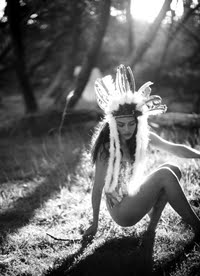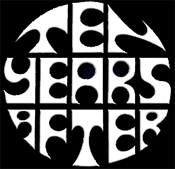Original artwork by Robert Crumb
Well I am back and a little more refreshed even if I did catch a good case of the blues. I was listening to some of the original blues and singers from the 20's-50's I was delighted to hear some of the tunes that many artists in the 60's and later have reworked and kept in the limelight. I have decided to put together some comps that showcase the evolution of blues during the time of my life. I also was humored just how many titles actually call the song some specific kind of blues . Now mind you not every song is truly a blues piece but if they call it the blues I gotta believe their good intentions. Songs from the kaleidoscopic days of rock that indeed have their roots in the blues
.
Blues is a genre and musical form that originated in African-American communities in the "Deep South" of the United States around the end of the 19th century. The genre is a fusion of traditional African music and European folk music, spirituals, work songs, field hollers, shouts and chants, and rhymed simple narrative ballads. The blues form, ubiquitous in jazz, rhythm and blues and rock and roll, is characterized by the call-and-response pattern and specific chord progressions, of which the twelve-bar blues is the most common. The blue notes are also an important part of the sound. Blues shuffles or walking bass reinforce the trance-like rhythm and form a repetitive effect called a groove.
Blues as a genre possesses other characteristics such as lyrics, bass lines, and instruments. The lyrics of early traditional blues verses consisted of a single line repeated four times. It was only in the first decades of the 20th century that the most common current structure became standard: the so-called AAB pattern, consisting of a line sung over the four first bars, its repetition over the next four, and then a longer concluding line over the last bars. Early blues frequently took the form of a loose narrative, often relating troubles experienced within African American society.
Many blues elements, such as the call-and-response format and the use of blue notes, can be traced back to the music of Africa. The origins of the blues are also closely related to the religious music of the Afro-American community, the spirituals. The first appearance of the blues is often dated to after emancipation and, later, the development of juke joints. It is associated with the newly acquired freedom of the former slaves. Chroniclers began to report about blues music at the dawn of the 20th century. The first publication of blues sheet music was in 1908. Blues has since evolved from unaccompanied vocal music and oral traditions of slaves into a wide variety of styles and subgenres. Blues subgenres include country blues, such as Delta and Piedmont, as well as urban blues styles such as Chicago and West Coast blues. World War II marked the transition from acoustic to electric blues and the progressive opening of blues music to a wider audience, especially white listeners. In the 1960s and 1970s, a hybrid form called blues rock evolved
By the beginning of the 1960s, genres influenced by African American music such as rock and roll and soul were part of mainstream popular music. White performers had brought African-American music to new audiences, both within the U.S. and abroad. However, the blues wave that brought artists such as Muddy Waters to the foreground had stopped. Bluesmen such as Big Bill Broonzy and Willie Dixon started looking for new markets in Europe. Dick Waterman and the blues festivals he organized in Europe played a major role in propagating blues music abroad. In the UK, bands emulated U.S. blues legends, and UK blues rock-based bands had an influential role throughout the 1960s.
Blues performers such as John Lee Hooker and Muddy Waters continued to perform to enthusiastic audiences, inspiring new artists steeped in traditional blues, such as New York–born Taj Mahal. John Lee Hooker blended his blues style with rock elements and playing with younger white musicians, creating a musical style that can be heard on the 1971 album Endless Boogie. B. B. King's virtuoso guitar technique earned him the eponymous title "king of the blues".
White audiences' interest in the blues during the 1960s increased due to the Chicago-based Paul Butterfield Blues Band and the British blues movement. The style of British blues developed in the UK, when bands such as The Animals, Fleetwood Mac, John Mayall & the Bluesbreakers, The Rolling Stones, The Yardbirds, and Cream and Irish musician Rory Gallagher performed classic blues songs from the Delta or Chicago blues traditions.
The British and blues musicians of the early 1960s inspired a number of American blues rock fusion performers, including The Doors, Canned Heat, the early Jefferson Airplane, Janis Joplin, Johnny Winter, The J. Geils Band, Ry Cooder, and The Allman Brothers Band. One blues rock performer, Jimi Hendrix, was a rarity in his field at the time: a black man who played psychedelic rock. Hendrix was a skilled guitarist, and a pioneer in the innovative use of distortion and feedback in his music.Through these artists and others, blues music influenced the development of rock music.
Santana, which was originally called the Carlos Santana Blues Band, also experimented with Latin-influenced blues and blues rock music around this time. At the end of the 1950s appeared the very bluesy Tulsa Sound merging rock'n'roll, jazz and country influences. This particular music style started to be broadly popularized within the 1970s by J.J. Cale and the cover versions performed by Eric Clapton of "After Midnight" and "Cocaine".
In the early 1970s, The Texas rock-blues style emerged, which used guitars in both solo and rhythm roles. In contrast with the West Side blues, the Texas style is strongly influenced by the British rock-blues movement. Major artists of the Texas style are Johnny Winter, Stevie Ray Vaughan, Doug Sahm, and ZZ Top. These artists all began their musical journey in the 1970s, but they did not achieve major international success until the next decade.
Welcome to volume 1 of Alla' Dem Blues
01 human ball blues - mccoys
02 jimmy's blues - mill valley bunch
03 tube train blues - brunning sunflower blues band
04 pony blues - canned heat
05 stonehead blues - eric quincy tate
06 tombstone blues - bob dylan
07 grand hotel blues - kathi mcdonald
08 hawaii blues - commander cody
09 travelin' riverside blues - loose gravel
10 american money blues - 60,000,000 buffalo
11 blues for millie - shades of joy
12 willy shakespere blues - bob mosley
13 fishin' blues - lovin' spoonful
14 ecological blues - blue cheer
15 london blues - canned heat
16 shotgun blues - blues brothers band
17 shaman's blues - doors
18 invitation to the blues - doug sahm
19 smokey factory blues - steppenwolf
20 bay bridge blues aum
21 rock coast blues - country joe & the fish
22 vicksburg blues - savoy brown
23 hot jelly roll blues - hot tuna
24 big railroad blues - grateful dead
























































































3 comments:
thanks, great compilation
Thank you for this. (I'm just catching up.) If you have the 60,000,000 Buffalo album, would you please post it?
Thanks, Lee
Many thanks for all the blues compilations
Post a Comment